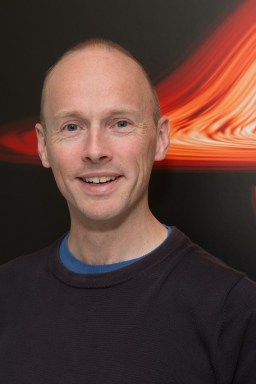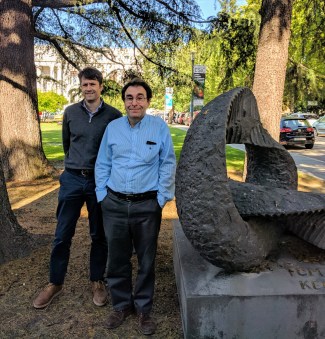At the beginning of next week Jennifer Sanders and I will be representing the CQG editorial team at the Loops’ 17 conference at the University of Warsaw in Poland.
Monthly Archives: June 2017
Congratulations to Dr Bernard Kelly, CQG Reviewer of the Year
Classical and Quantum Gravity is proud to recognise excellence in peer review and acknowledge our reviewers for their invaluable contribution to the journal.

Bernard Kelly, University of Maryland, Baltimore County & NASA Goddard Space Flight Center
Congratulations to Dr Bernard Kelly who has won our newly introduced ‘Reviewer of the Year‘ title for his excellent referee reports throughout 2016. Below Dr Kelly gives us some insight into his process of reviewing and tells us a little bit more about himself.
Tell us how you go about reviewing an article?
First I sit on it for a week or so, thinking “Sounds appropriate. I’ll take a look when I get the chance”. And then the next thing, the journal is pinging me with a follow-up notification, which is when I realise I’ve let too much time slip by.
I read the title, abstract, gloss over the Introduction, and try to assess how mathematically involved the text is, and how much overlap there is with my own areas of expertise (or at least competence). I don’t expect to be familiar with all aspects of the research, but if it’s 50% or better (in whatever fuzzy metric I’m using), I think it’s worth giving it a serious look. Occasionally, I find that what I thought was going to be a good fit wasn’t on closer inspection, and I end up declining.
Now I print the paper out: in colour, if I’m feeling extravagant with my lab’s resources, but usually in B & W. It’s impractical to mark up PDFs on a laptop; perhaps it’d be better on a full-size tablet, but I don’t have one yet. I break out two pens — usually blue & red.
The Era of Gravitational-Wave Astronomy
At the beginning of next week I will be attending the Era of Gravitational Wave Astronomy conference (or TEGRAW 2017, for short) at the Institut D’Astrophysique in Paris, France.
The conference aims to highlight the most recent developments in both theoretical works (such as the two-body problem, effective theories, numerical relativity, and tests of gravity theories) and experimental works (such as future detectors, both on ground and in space).
IOP Publishing/ CQG will have a small table top booth at the event so feel free to stop by if you fancy having a chat. I’ll only be there Monday through Wednesday (unfortunately missing the social event) but am looking forward to meeting you.
I hope to see you in Paris!
Can boundaries and Hamiltonians get along?
by J. Fernando Barbero G., Benito A. Juárez-Aubry, Juan Margalef-Bentabol and
Eduardo J. S. Villaseñor.
Boundaries are ubiquitous in physics, if anything because most material objects tend to have one… In the context of gravity they play a number of interesting roles: from the definition of conserved quantities in asymptotically flat spacetimes to holography (no lasers here, sorry) or the modeling of black holes. A natural question in the context of the canonical quantization of gravitational theories is how to obtain their Hamiltonian description – in particular the constraints – in the presence of boundaries.

Eduardo and Fernando trying to get inspiration for the new group logo
“Juan, can you hear us?”
“Yes, the connection seems to be working better these days.”
“Hi Benito. Good to see you! Can you also see us?”
“Sorry for the delay, it is early in the morning here. Yeah, I can see you perfectly. Hi, Eduardo and Fernando! Hi, Juan!”
“Hi, there!”
“So, as I told you in my last email, we have to write this CQG+ Insight piece about our traces paper. You know, it should be informative, informal and infused with deep physical insights, so, any suggestions? — Yes, Fernando.”


You must be logged in to post a comment.